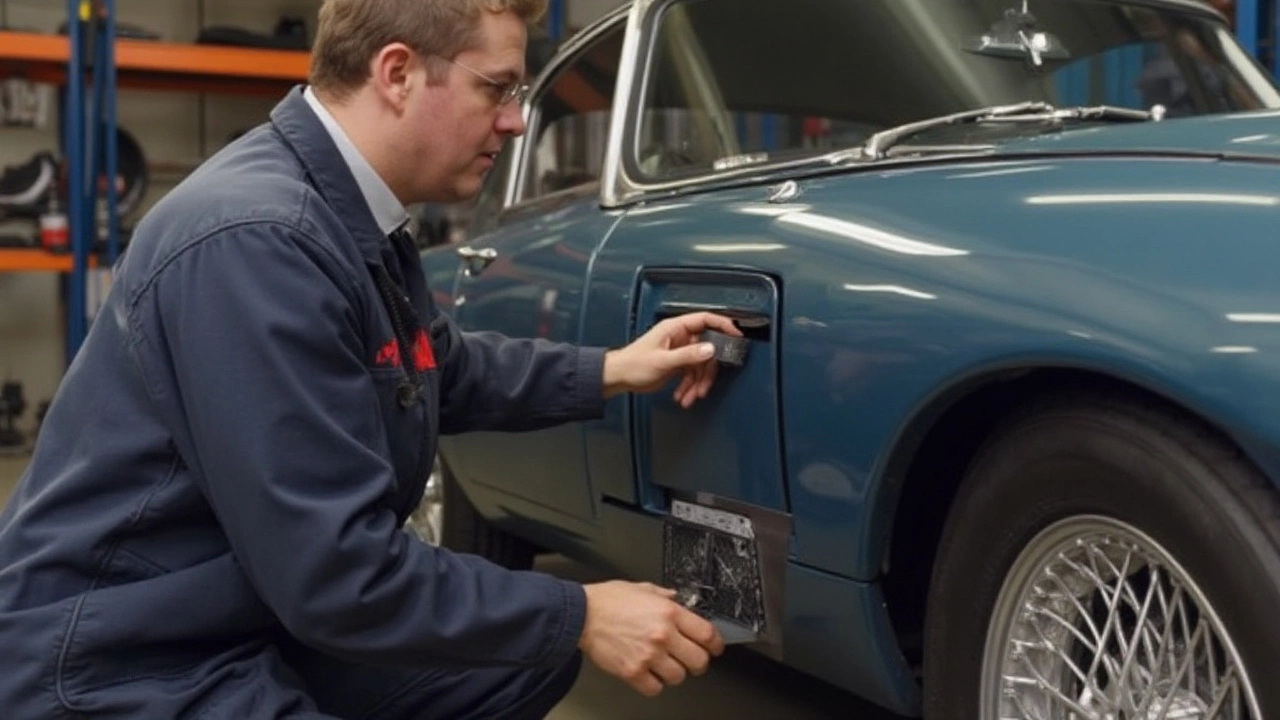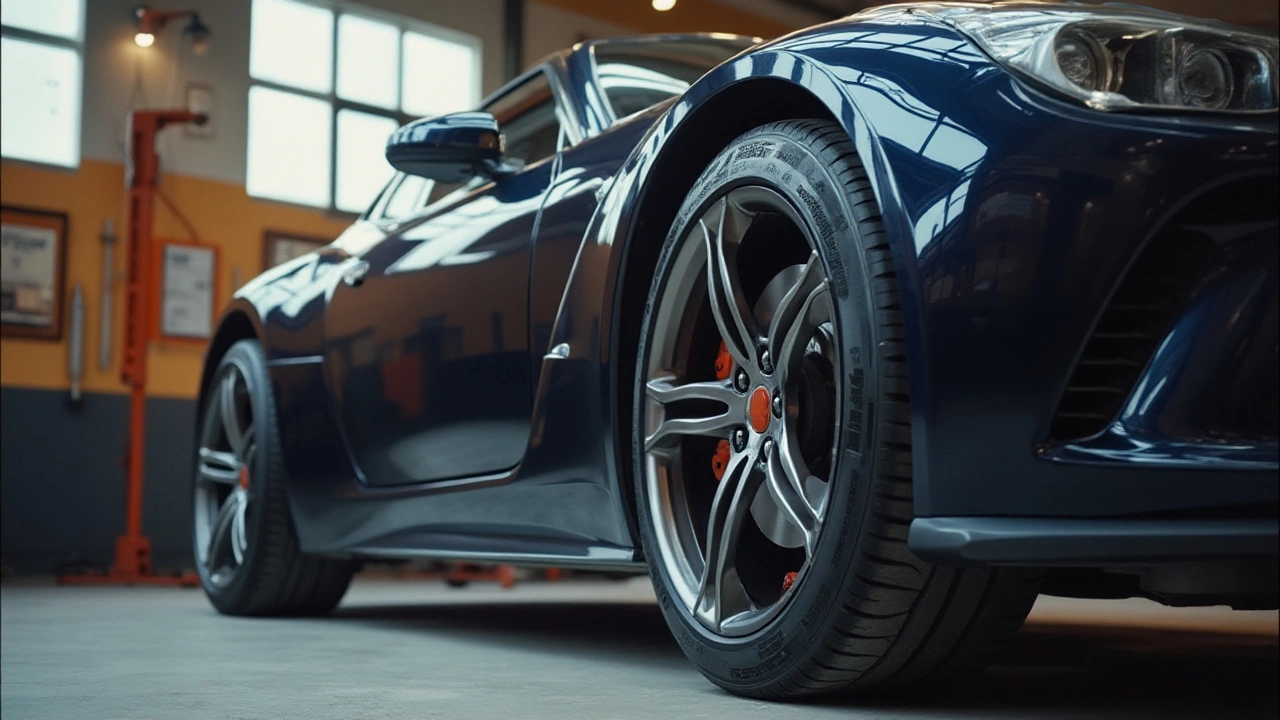When it comes to vehicle customization, wheel spacers often find themselves at the center of many debates. These small components, sitting quietly between the wheel hub and the wheel, can have a significant impact on both the aesthetics and performance of your ride. But are they safe, especially if they measure 1 inch?
In the world of car modifications, questions about safety and functionality often arise with the use of spacers. While they promise enhanced handling and a more aggressive stance, there's always the lingering doubt about potential risks. Our goal here is to explore everything there is to know about 1 inch wheel spacers, unravel the myths, and provide you with tips on how to incorporate them safely into your vehicle setup.
- Understanding Wheel Spacers
- Benefits of 1 Inch Spacers
- Potential Risks and Concerns
- Installation Tips for Safety
- Expert Opinions and Considerations
Understanding Wheel Spacers
Wheel spacers might seem like simple components, but their role in the dynamics of a vehicle is anything but simplistic. Essentially, a wheel spacer is a disc-shaped device installed between the vehicle’s wheel hub and the wheel itself. The primary function? To increase the distance between the wheel and the hub, effectively pushing the wheel outwards. This modification can instantly heighten the aesthetic appeal of any car, giving it a more robust and aggressive stance. Beyond looks, the impact of a wheel spacer extends into the realm of handling, stability, and even fuel efficiency.
What many drivers appreciate about wheel spacers is their ability to allow for larger wheels without altering the suspension system. By pushing the wheels out, spacers provide the clearance necessary to avoid rubbing against wheel arches - a boon for car enthusiasts aiming for a specific tire and wheel setup. However, it's vital to keep in mind that not all spacers are created equal. Differences in material, design, and size can significantly influence performance and safety. High-quality spacers are usually made from advanced materials like aircraft-grade aluminum, providing durability without adding excess weight that could affect fuel efficiency.
Among the spectrum of sizes available, the 1 inch wheel spacer strikes a balance between aesthetic appeal and functional gains. Although they might be perceived as minor adjustments, the actual effects can be sizeable. When utilized properly, they can improve the car’s cornering prowess by offering a wider stance and thus, better grip. Still, potential users should always weigh these benefits against the risks and abide by the specific guidelines pertinent to their vehicle's make and model. As Car and Driver notes, “Spacers provide the room needed to fit larger brakes, an aspect often overlooked but crucial to performance upgrades.”
“Spacers provide the room needed to fit larger brakes, an aspect often overlooked but crucial to performance upgrades.” - Car and Driver
The discussion naturally turns to safety when vehicle modifications come into play, and rightly so. While the concept behind a spacer might be straightforward, its impact on safety and handling requires meticulous thought. Proper installation is key to preventing potential issues such as wheel vibrations or even catastrophic wheel detachments. Detailed understanding and attention to detail can mitigate most risks, ensuring that these devices enhance rather than compromise driving experience.
The applicability of wheel spacers isn't limited to off-road vehicles or flashy sports cars alone. They find utility in everyday rides, subtly improving functionality and aesthetics. Before diving headfirst into any modifications though, car owners must ensure that the modifications comply with local road safety regulations, as laws may differ significantly across regions.
Benefits of 1 Inch Spacers
When you install 1 inch wheel spacers, they do more than just spruce up your car's appearance; they also influence performance in several positive ways. One of the main benefits is that spacers can create a wider wheel track. This broadening of the stance not only provides a more aggressive look but also effectively enhances vehicle handling. Picture yourself navigating a sharp corner with ease, the car hugging the road just right because of that wider track holding it stable.
Moreover, wheel spacers allow for the fitting of larger wheels and tires without the need for extensive modification to the vehicle’s suspension or body. For enthusiasts yearning to mount those flashy, broad-shoulder tires, spacers may be the easiest route. Plus, they improve tire clearance, preventing the tires from rubbing against the wheel well or suspension components. This means a safer ride, especially during tight turns or when driving over bumps.
An unexpected benefit is that spacers can provide better brake clearance too. If you're considering upgrading your vehicle’s brake system, spacers can ensure that such enhancements fit properly with less hassle. By stepping in to create that much-needed space between components, they can help achieve a braking system setup that is not only efficient but less cumbersome.
“Enhancing a car's stance with wheel spacers can transform its driving dynamics, offering a more grounded feel,” states auto expert Mitchell Hansen, who has spent over two decades in the industry.
For car enthusiasts passionate about aesthetics and performance, maintaining the right balance is key. Wheel spacers can offer the flexibility needed for such customization. It doesn't alter the core structure of the vehicle in a significant way, hence why many car owners find them to be a convenient option. They are easy to install, don’t require modifications that could void warranties, and can be removed just as easily if plans change.
- Improved vehicle handling due to a wider stance.
- Ability to fit larger wheels and tires.
- Increase in tire clearance to prevent rubbing.
- Better brake system accommodation.
- Easy installation and reversibility.
While 1 inch spacers come with such advantages, it's always good practice to weigh them against your vehicle’s specific requirements and preferences. Safe practices should always be at the forefront of any modification process to ensure your ride remains both stylish and roadworthy.

Potential Risks and Concerns
When talking about wheel spacers, concerns about safety and mechanical stability are bound to surface. One of the primary issues that enthusiasts and skeptics often discuss is the potential strain that spacers can impose on the vehicle's components. These seemingly simple devices can alter the load distribution on the suspension system, wheels, and hubs. Changes in force distribution might lead to uneven tire wear, accelerated suspension wear, or even damage to the wheel bearings over time. It's crucial to understand how shifting the wheel outward by an inch through a 1 inch spacer can also affect the scrub radius, which in turn affects handling and traction.
There's also the topic of alignment. Spacing the wheels further apart can create a more stable base, offering improved handling in many cases, but it may require a careful and professional wheel alignment to prevent issues like steering pull or undesirable vibrations. These are not just minor annoyances; if left unchecked, they can escalate into significant safety hazards. As wheel spacers add to the length of the wheel studs, concerns about proper tightening emerge. Under-tightened lugs could lead to wheels becoming loose over time, whereas overly tight ones could snap, especially under stressful driving conditions.
Heat dissipation is another factor to consider. By extending the wheelbase, spacers can affect the way heat escapes from the brakes, potentially leading to prolonged heat exposure and, thus, brake fade—a dangerous situation that can augment your vehicle’s stopping distance unexpectedly. There's an assumption that by fitting 1 inch wheel spacers onto stock studs, you can bypass concerns about their length. However, most experts would advise against such practice, pressing the importance of compatibility and proper fitting.
On various automotive forums, discussions about poor-quality spacers abound. This aspect cannot be stressed enough, as subpar materials or design flaws in cheap wheel spacers can lead to catastrophic failures. It's advisable to invest in spacers from reputable manufacturers and to pay attention to material specifications and load ratings. Durability and structural integrity are key to preventing disastrous wheel detachments. This reality was highlighted by the respected automotive expert, "Quality matters more than anything when it comes to mods that affect your car’s geometry"—a reminder that ensures one seeks the best products.
Lastly, it’s important to consider the legality and insurance implications of altering your vehicle with spacers. Regulations vary widely across different regions, so it’s imperative to confirm the local laws before installation. Insurers may also be hesitant to cover damage resulting from unauthorized modifications, leaving drivers with unwanted liabilities in the event of a mishap.
Installation Tips for Safety
When it comes to fitting 1 inch wheel spacers onto your vehicle, ensuring a safe installation is paramount. A well-executed installation not only enhances the vehicle’s performance but also minimizes potential risks associated with incorrect fitting. Start by meticulously selecting the right spacers for your specific car model. Ensure that the bolt pattern and center bore match precisely; mismatched patterns can lead to severe mechanical issues down the road. It’s helpful to refer to your vehicle's manual or consult with a professional mechanic familiar with car modifications if you're unsure about any specifications.
Before diving into the installation, a thorough inspection of your car’s wheels and hubs is crucial. Look for any signs of wear or damage. This is also the right time to clean these parts, removing any dirt, rust, or debris that might interfere with the installation process. A clean surface ensures a smoother operation and a tighter fit between the spacer and the wheel. Start the installation by properly supporting your vehicle on a stable and level surface, using a reliable jack and jack stands. Never compromise on the integrity of your safety equipment.
The installation process should then proceed with a step-by-step approach. After ensuring safety and cleanliness, gently fit the spacer against the hub. It's vital to align the holes correctly to avoid misalignment, which could lead to unsafe driving conditions. Once placed, you must use the correct torque to fasten the spacer. Over-tightening or under-tightening can cause stress, leading to warping of the spacer or the possibility of it coming loose. The manufacturer's specifications often provide torque settings that are tailored for their products, which must be followed meticulously.
A quality check post-installation is a non-negotiable task. After driving around 50 to 100 kilometers, re-tighten the bolts to guarantee they haven't loosened and everything remains steady. Also, during the first few drives, be sensitive to any unusual vibrations or noise, which might suggest a problem with the installation. Monitoring these early signs can prevent serious damage further along your journey. Automakers and industry experts can't emphasize enough the importance of periodic checks, using tools like a torque wrench to ensure everything remains in the right place over time.
According to automotive expert John Hughes "Proper installation and regular checks of wheel spacers can dramatically enhance your driving experience while ensuring safety."
While these steps provide a guide for a safe installation, remember that practice and patience are the key. Each vehicle setup may have slight variations, therefore it’s useful to stay adaptable and continue to learn about your vehicle's unique needs. The beauty of any automotive enhancement lies in the balance between functionality and safety.

Expert Opinions and Considerations
Diving into the world of car modifications can be thrilling, yet it requires a balanced approach to ensure safety. Wheel spacers, often add an aesthetic edge and enhance performance, tend to stir diverse opinions among automotive experts. Some mechanics and enthusiasts argue in their favor, emphasizing their potential for improved handling and a more aggressive vehicle stance. However, others urge caution, highlighting potential risks associated with improper installation, which can lead to compromised safety on the road.
At the heart of these discussions is the pivotal question: are 1 inch wheel spacers safe? The consensus among experts is nuanced. On one hand, advocates assert that when installed correctly, they can improve tire clearance, correct offset issues, and even facilitate the use of aftermarket wheels. These enhancements can result in noticeable handling benefits, particularly in vehicles with wider tires. On the flip side, critics worry about the increased stress such spacers impose on wheel bearings and suspension components, potentially shortening their lifespan.
"While wheel spacers can provide significant benefits, their safety is predominantly determined by the quality of the product and the precision of the installation," says Jack Davies, a renowned automotive engineer with over two decades of industry experience.
When considering 1 inch spacers, it becomes crucial to evaluate the manufacturer's credibility and the product's compatibility with your vehicle. Many experts suggest that opting for high-quality spacers from reputable manufacturers can mitigate potential risks. It's vital to ensure that the spacers are made from robust materials, such as aircraft-grade aluminum, which can endure the pressures exerted during driving. Moreover, proper installation by a professional is often recommended to assure even weight distribution and secure fitting, significantly reducing the likelihood of wheel detachment.
Interestingly, data suggests a growing trend in the usage of wheel spacers among car enthusiasts globally. According to recent studies, there has been a noticeable increase in car owners employing spacers for both aesthetic and functionality purposes over the past decade. This shift indicates an evolving perspective towards these automotive components, albeit with an emphasis on safety and reliability.
Ultimately, navigating the decision to use 1 inch wheel spacers involves weighing the pros and cons and seeking expert advice. While experienced car modifiers might feel confident installing these components themselves, novices are encouraged to consult with professionals. As a guiding principle, prioritizing high-quality materials, precise fitment, and professional installation can help ensure that this modification enhances your vehicle safely and effectively.




